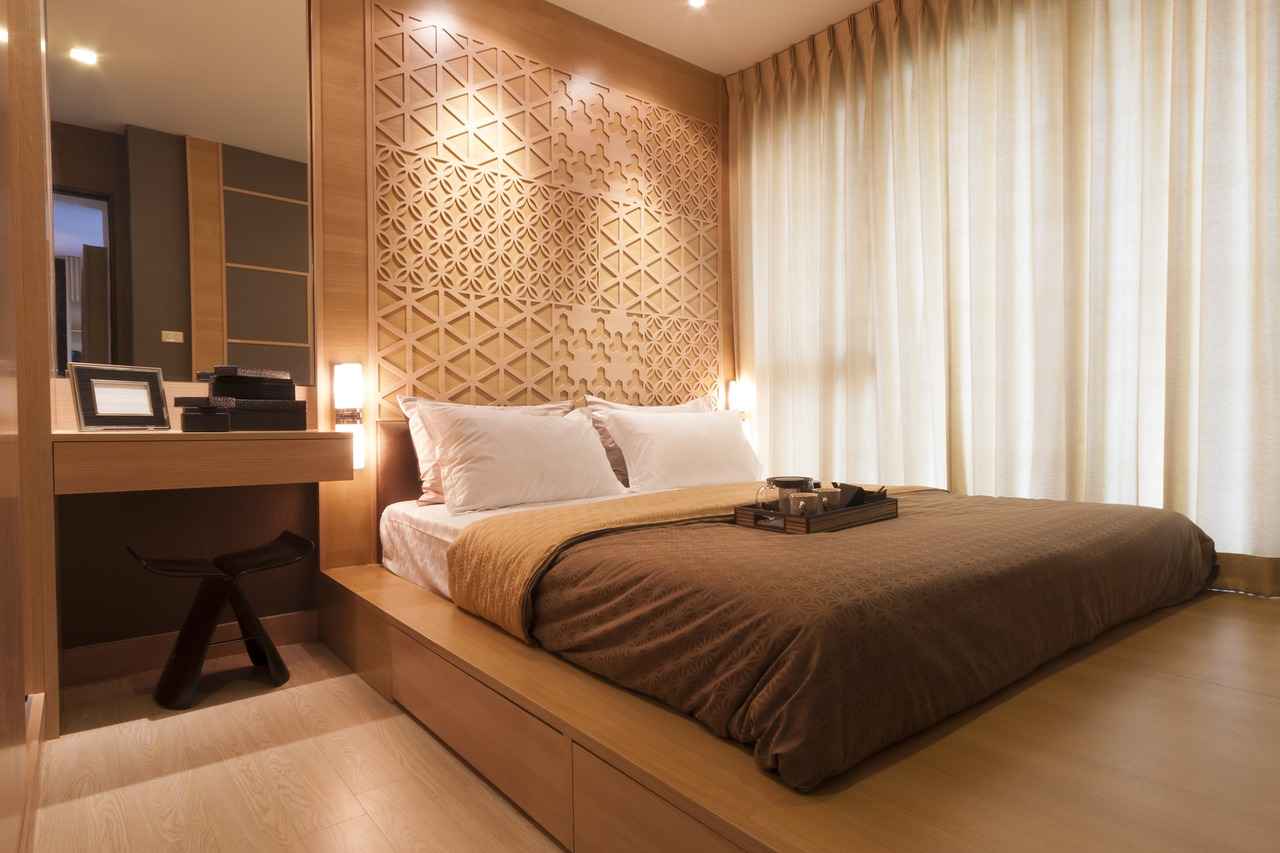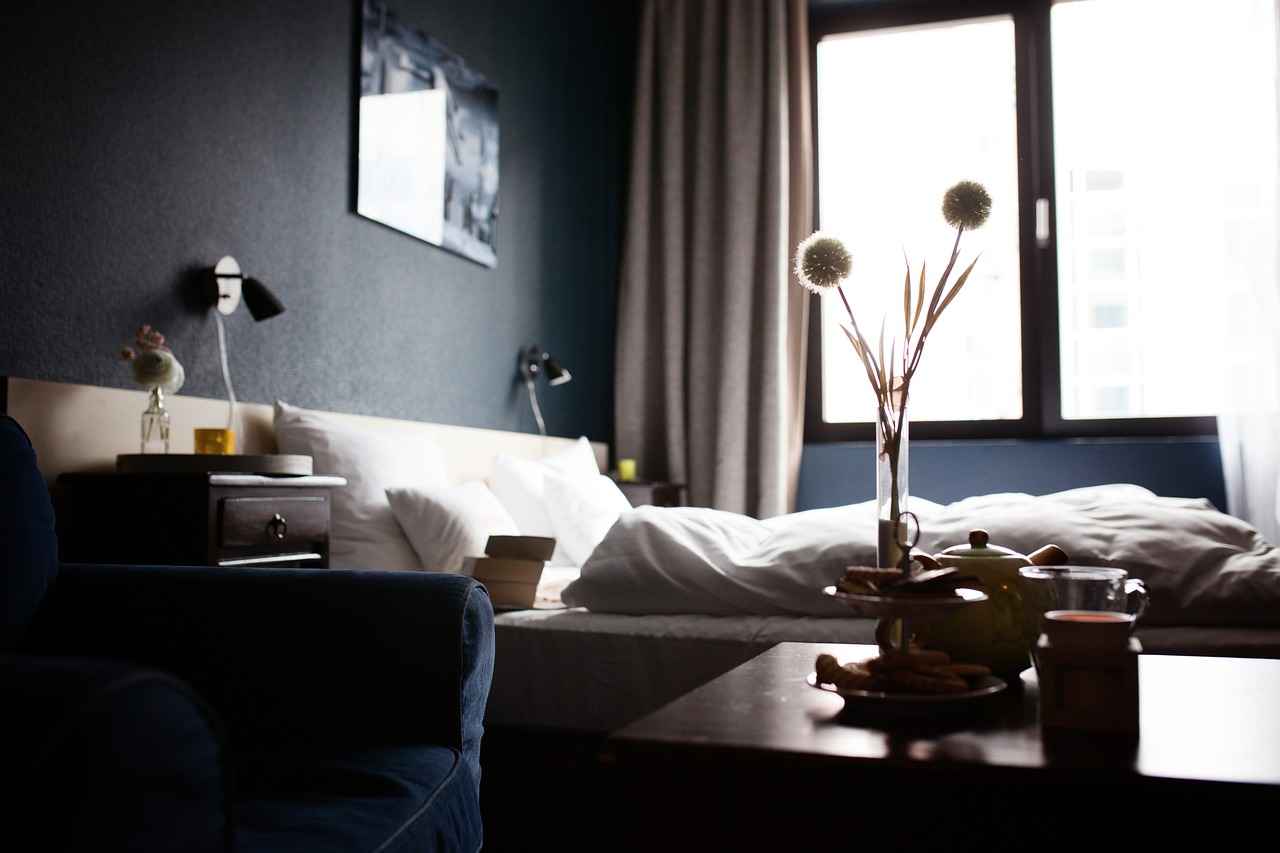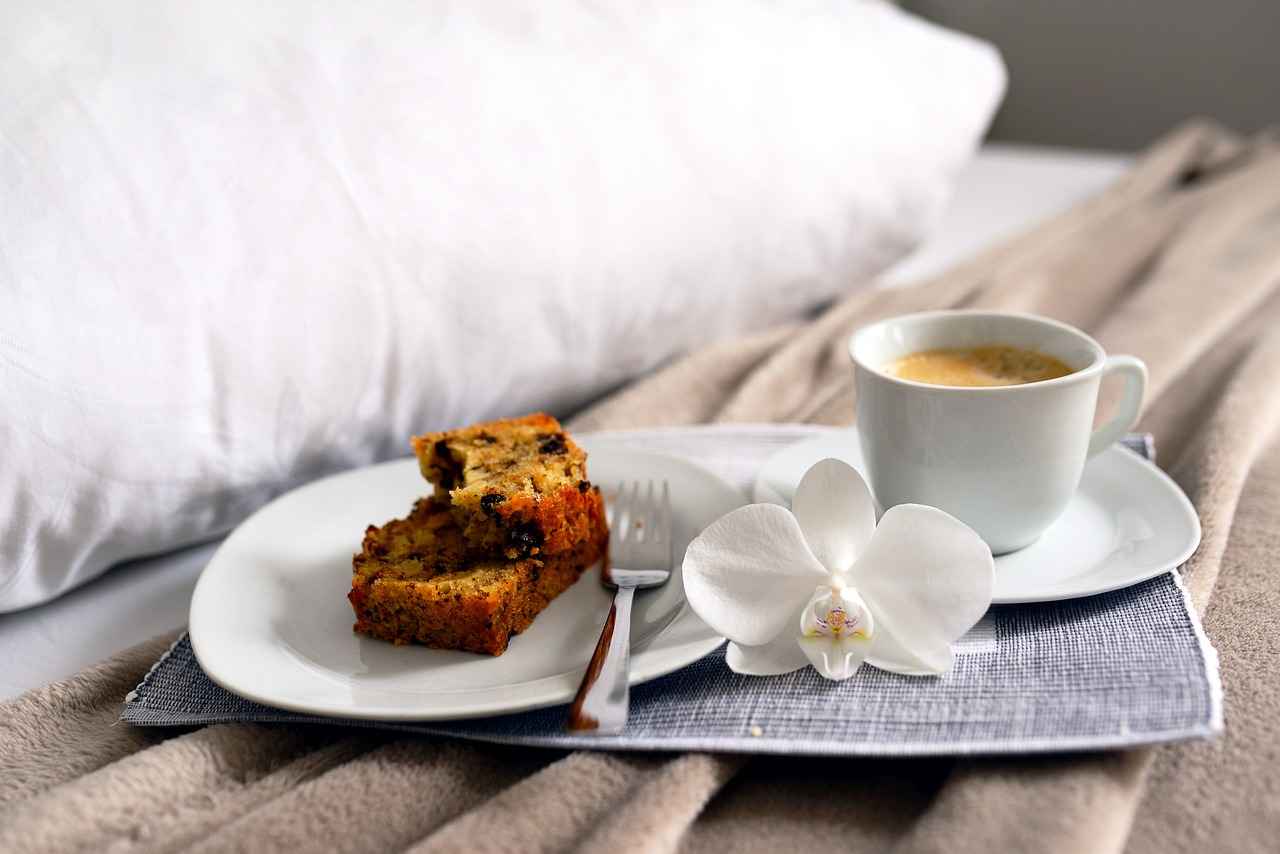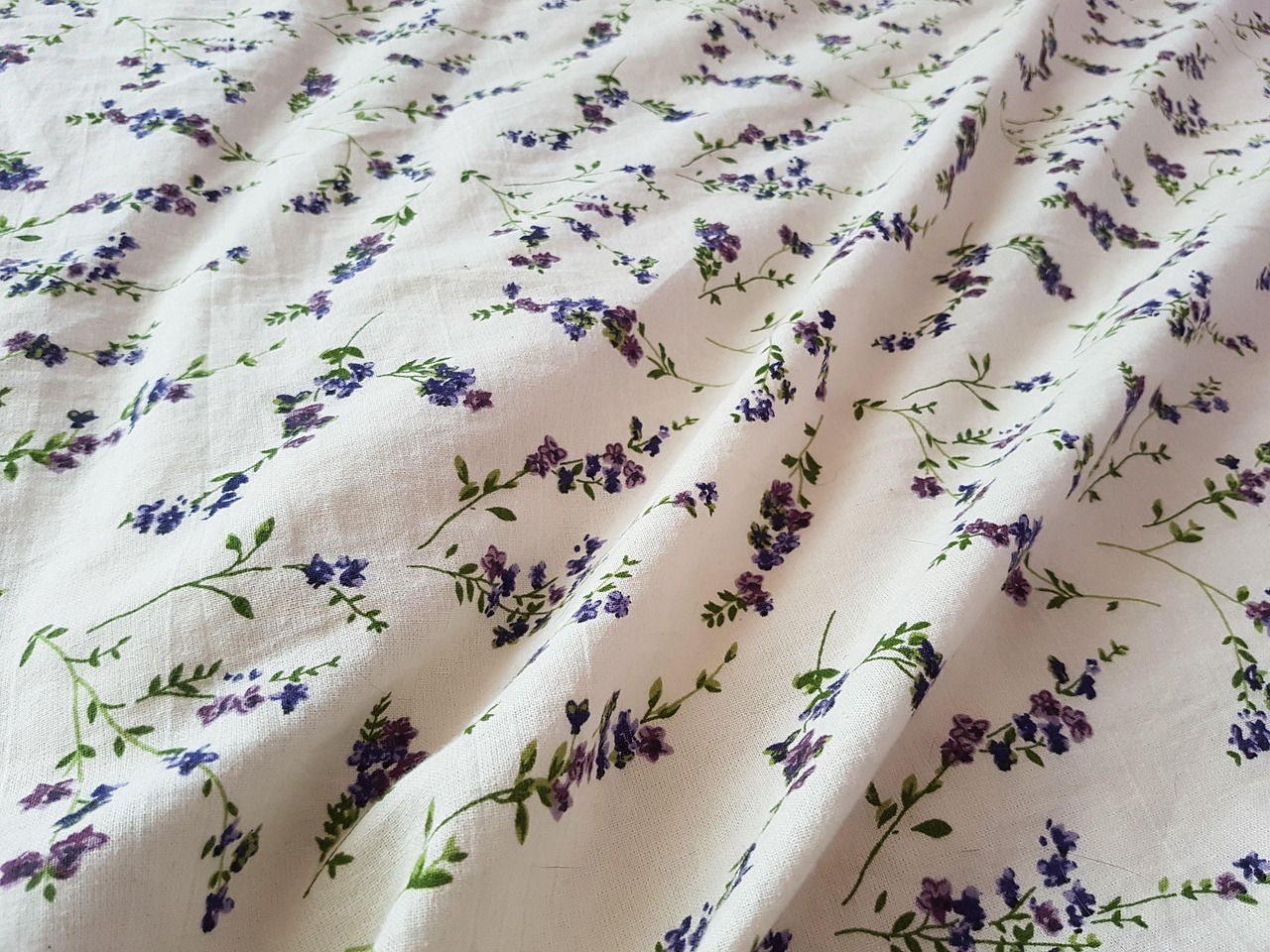In today’s world, maintaining a clean and healthy sleeping environment is more important than ever. This article delves into the health benefits of antibacterial bed linens, emphasizing their significant role in promoting hygiene, preventing allergies, and enhancing sleep quality, ultimately contributing to a healthier lifestyle.
1. Antibakteriyel Nevresim Nedir?
Antibacterial bed linens are specially treated fabrics designed to inhibit the growth of bacteria, fungi, and other microbes. This treatment ensures a cleaner and healthier sleeping environment, which is crucial for overall well-being.
2. Antibakteriyel Nevresimlerin Sağlık Üzerindeki Etkileri
These linens can significantly reduce the risk of infections and allergies. By minimizing exposure to harmful microorganisms during sleep, they promote overall health.
- Alerji ve Astım Üzerindeki Etkileri: Antibacterial bed linens help alleviate allergy symptoms and asthma attacks by reducing dust mites and other allergens commonly found in bedding.
- Cilt Sağlığına Faydaları: The use of antibacterial bed linens can also benefit skin health, reducing the risk of irritations and infections caused by bacteria present on traditional fabrics.
3. Antibakteriyel Nevresimlerin Kullanım Alanları
These linens are ideal for various settings, including homes, hospitals, and hotels, where hygiene is a top priority.
4. Antibakteriyel Nevresimlerin Seçimi
Choosing the right antibacterial bed linens involves considering factors like fabric type, treatment methods, and certifications to ensure effectiveness and safety.
5. Antibakteriyel Nevresimlerin Bakımı
Proper care and maintenance of antibacterial bed linens are essential to preserve their properties and extend their lifespan. Following specific washing instructions helps maintain their effectiveness.
6. Antibakteriyel Nevresimlerin Faydaları ve Dezavantajları
While there are numerous benefits to using antibacterial bed linens, it is important to weigh these against potential drawbacks, such as cost and availability.
7. Antibakteriyel Nevresimlerin Farklı Türleri
Exploring various types of antibacterial bed linens can help consumers make informed choices that suit their specific needs.
8. Antibakteriyel Nevresimlerin Çevresel Etkileri
Considering the environmental impact of antibacterial bed linens is crucial, especially regarding the sustainability of materials and manufacturing processes.
9. Antibakteriyel Nevresimlerin Geleceği
The future of antibacterial bed linens looks promising, with ongoing innovations in fabric technology that enhance their effectiveness and sustainability.
10. Sonuç: Antibakteriyel Nevresimlerin Önemi
In conclusion, antibacterial bed linens play a vital role in promoting health, comfort, and hygiene. They are an essential addition to any home for better sleep quality and overall wellness.

1. Antibakteriyel Nevresim Nedir?
Antibacterial bed linens are innovative fabrics designed to combat the growth of harmful microorganisms, including bacteria, fungi, and viruses. These specially treated materials not only enhance the cleanliness of your sleeping environment but also contribute to overall health and well-being. By creating a barrier against these pathogens, antibacterial bed linens ensure that your bed remains a sanctuary for restful sleep.
In today’s world, where hygiene is paramount, the importance of using antibacterial linens cannot be overstated. They are particularly beneficial for individuals with allergies or respiratory issues, as they minimize exposure to allergens that thrive in traditional bedding. Furthermore, the use of these linens can significantly reduce the risk of infections, making them a wise investment for anyone looking to improve their sleep quality.
When choosing antibacterial bed linens, it’s essential to consider the fabric type and the treatment methods employed. Common materials include cotton and polyester blends, each offering unique benefits. Cotton is renowned for its breathability and comfort, while synthetic options provide durability and stain resistance. Understanding these differences can help consumers select the best product for their needs.
Moreover, the effectiveness of antibacterial treatments can be influenced by proper care. Following specific washing instructions is crucial to maintain the linens’ antibacterial properties. Regular maintenance not only extends the lifespan of the bed linens but also ensures that they continue to provide a hygienic sleeping environment.
In conclusion, antibacterial bed linens represent a significant advancement in bedding technology, offering numerous health benefits. By investing in these specialized fabrics, individuals can enjoy a cleaner, healthier, and more comfortable sleep experience.

2. Antibakteriyel Nevresimlerin Sağlık Üzerindeki Etkileri
Antibacterial bed linens have become increasingly popular due to their numerous health benefits. These specially treated fabrics are designed to inhibit the growth of harmful microorganisms, ensuring a cleaner and healthier sleeping environment. By using antibacterial linens, individuals can experience significant improvements in their overall well-being.
One of the most notable effects of these linens is their ability to reduce the risk of infections. Traditional bed linens can harbor bacteria and fungi, which can lead to various health issues. In contrast, antibacterial linens actively combat these microorganisms, thus promoting a safer sleeping space. This is especially important for individuals with weakened immune systems or those recovering from illnesses.
Additionally, antibacterial bed linens can greatly minimize the occurrence of allergies. Many people suffer from allergies triggered by dust mites, mold, and other allergens that thrive in conventional bedding. By using antibacterial linens, the growth of these allergens is significantly inhibited, leading to a reduction in allergy symptoms and better respiratory health. This is particularly beneficial for individuals with asthma or other respiratory conditions.
Moreover, the use of antibacterial linens can contribute to improved skin health. Traditional fabrics can accumulate bacteria that may cause skin irritations or infections. Antibacterial linens, on the other hand, help maintain a cleaner surface against which the skin can rest, thereby reducing the risk of breakouts and other skin-related issues.
In summary, the health benefits of antibacterial bed linens are substantial. They not only help in minimizing exposure to harmful microorganisms but also play a crucial role in enhancing sleep quality and overall health. By investing in these linens, individuals can create a more hygienic sleeping environment, leading to a healthier lifestyle.
2.1. Alerji ve Astım Üzerindeki Etkileri
Antibacterial bed linens are becoming increasingly popular due to their potential to alleviate allergy symptoms and reduce the frequency of asthma attacks. These specially treated fabrics are designed to combat allergens, particularly dust mites, which are notorious for triggering allergic reactions and respiratory issues.
Dust mites thrive in traditional bedding, feeding on dead skin cells and thriving in warm, humid environments. By utilizing antibacterial properties, these linens create an inhospitable environment for dust mites, significantly reducing their population. This can lead to a noticeable decrease in allergy symptoms such as sneezing, runny nose, and itchy eyes.
In addition to reducing dust mite populations, antibacterial bed linens help to minimize the presence of other common allergens, such as pet dander and pollen. This is particularly beneficial for individuals with asthma, as these allergens can exacerbate their condition. By providing a cleaner sleeping environment, individuals may experience improved breathing and a more restful night’s sleep.
Furthermore, the use of antibacterial bed linens can enhance overall air quality in the bedroom. By limiting the accumulation of allergens, these linens contribute to a healthier atmosphere, which is crucial for those who suffer from respiratory issues. Improved air quality can lead to better sleep quality, allowing individuals to wake up feeling more refreshed and energized.
In summary, antibacterial bed linens offer significant benefits for those suffering from allergies and asthma. By reducing dust mites and other allergens, these linens promote a healthier sleeping environment, ultimately leading to improved well-being and quality of life.
2.1.1. Toz Akarları ile Mücadele
Toz akarları birçok insan için alerji ve solunum sorunlarının yaygın tetikleyicileridir. Bu küçük canlılar, özellikle yatak örtülerinde ve yastıklarda bulunarak, uyku kalitesini olumsuz etkileyebilir. Antibakteriyel nevresimlerin kullanımı, toz akarlarıyla mücadelede etkili bir yöntem sunar.
Antibakteriyel nevresimler, özel bir işlemle üretilmiş kumaşlardır. Bu işlem, toz akarlarının yaşaması için elverişsiz bir ortam yaratır. Böylece, bu zararlı organizmaların üremesi büyük ölçüde engellenir. Yapılan araştırmalar, antibakteriyel nevresimlerin kullanılmasıyla birlikte, alerjik reaksiyonların ve astım ataklarının belirgin şekilde azaldığını göstermektedir.
| Antibakteriyel Nevresimlerin Avantajları | Geleneksel Nevresimlerin Dezavantajları |
|---|---|
| Toz akarlarını azaltma | Toz akarları için uygun ortam |
| Alerji semptomlarının hafifletilmesi | Alerji tetikleyicilerin varlığı |
| Daha temiz bir uyku ortamı | Daha sık temizlik gereksinimi |
Bu nevresimler, yalnızca alerji ve astım gibi sağlık sorunlarını önlemekle kalmaz, aynı zamanda uyku kalitesini artırır. Temiz bir uyku ortamı, daha rahat bir uyku deneyimi sağlar ve genel sağlığı olumlu yönde etkiler. Özellikle çocuklar ve evcil hayvan sahipleri için, antibakteriyel nevresimler, hijyenik bir uyku alanı sağlamada büyük önem taşır.
Sonuç olarak, toz akarlarıyla mücadelede antibakteriyel nevresimlerin kullanımı, hem sağlık hem de konfor açısından önemli bir adımdır. Bu ürünler, uyku kalitesini artırarak, daha sağlıklı bir yaşam tarzına katkı sağlar.
2.1.2. Hava Kalitesinin İyileştirilmesi
Improving Air Quality with Antibacterial Bed Linens
In today’s world, where indoor air quality is becoming increasingly important for our health and well-being, antibacterial bed linens offer a significant advantage. These specially designed fabrics not only combat the growth of harmful microorganisms but also play a crucial role in enhancing the overall air quality in our sleeping environments.
By effectively minimizing allergens such as dust mites, pollen, and pet dander, antibacterial linens contribute to a cleaner atmosphere. This reduction in allergens can lead to better breathing during sleep, especially for individuals suffering from allergies or asthma. When we sleep, our bodies undergo vital restorative processes, and clean air is essential for this. Improved air quality can lead to deeper, more restful sleep, which is fundamental for overall health.
Moreover, the use of antibacterial bed linens can significantly reduce the incidence of respiratory issues. A cleaner sleeping environment means less exposure to triggers that can cause discomfort or exacerbate existing health conditions. This is particularly beneficial for children and those with pre-existing health concerns.
To maximize the benefits of antibacterial linens, it is essential to maintain them properly. Regular washing according to the manufacturer’s instructions helps preserve their antimicrobial properties, ensuring they continue to improve air quality effectively. Additionally, keeping the bedroom well-ventilated can further enhance the positive effects of these linens.
In conclusion, the integration of antibacterial bed linens into our sleeping spaces is a proactive step towards enhancing air quality. By reducing allergens and promoting better breathing, these linens not only contribute to improved sleep quality but also support overall health and well-being.
2.2. Cilt Sağlığına Faydaları
Antibacterial bed linens offer numerous benefits for skin health, primarily by reducing the risk of skin irritations and infections that can arise from bacteria commonly found on traditional fabrics. The significance of maintaining skin health cannot be overstated, as our skin acts as a barrier against external pathogens. By using antibacterial linens, individuals can create a cleaner sleeping environment, which is especially crucial for those with sensitive skin or pre-existing conditions.
Traditional bed linens can harbor a variety of harmful microorganisms. Over time, these bacteria can proliferate, leading to skin issues such as rashes, acne, and other irritations. Antibacterial bed linens are treated with special agents that inhibit the growth of these microbes, thus minimizing the risk of skin-related problems. For individuals prone to allergies or skin sensitivities, this can translate into a significant improvement in overall skin health.
- Reduced Risk of Infections: By limiting bacterial growth, these linens help prevent infections that may occur due to cuts or abrasions on the skin.
- Enhanced Comfort: Antibacterial properties can also lead to a more comfortable sleeping experience, as individuals are less likely to experience discomfort from skin irritations.
- Improved Skin Conditions: People suffering from conditions such as eczema or psoriasis may find relief when using antibacterial linens, as they create a less hospitable environment for irritants.
Furthermore, the use of antibacterial bed linens can contribute to better sleep quality. When individuals feel comfortable and free from irritations, they are more likely to enjoy uninterrupted sleep, which is essential for overall health and well-being. In summary, incorporating antibacterial bed linens into your sleeping environment is a proactive step toward enhancing skin health and promoting a more restful sleep.

3. Antibakteriyel Nevresimlerin Kullanım Alanları
Antibacterial bed linens are increasingly becoming essential in various environments due to their ability to enhance hygiene and comfort. Their versatility makes them suitable for diverse settings, including homes, hospitals, and hotels. In these spaces, maintaining a high standard of cleanliness is crucial for both health and comfort.
In homes, antibacterial linens provide an extra layer of protection against allergens and bacteria, making them ideal for families, especially those with children or pets. The use of these linens can significantly reduce the risk of infections and allergies, ensuring that the sleeping environment remains clean and safe. They contribute to a peaceful night’s sleep, free from the worry of harmful microorganisms.
In hospitals, the importance of antibacterial bed linens cannot be overstated. These linens play a critical role in preventing hospital-acquired infections (HAIs), which can pose serious risks to patient safety. By inhibiting the growth of bacteria and fungi, hospitals can maintain a sterile environment, ultimately leading to better patient outcomes and faster recoveries.
Hotels also benefit from using antibacterial linens, as they enhance guest comfort and satisfaction. With the growing awareness of hygiene, travelers are increasingly looking for accommodations that prioritize cleanliness. Antibacterial linens provide peace of mind to guests, knowing they are sleeping on clean, safe bedding that minimizes the risk of exposure to harmful germs.
In conclusion, the use of antibacterial bed linens across different settings not only promotes hygiene but also enhances overall comfort. By investing in these specialized linens, individuals and institutions can create healthier environments that prioritize the well-being of everyone involved.
3.1. Hastanelerde Kullanım
In healthcare settings, the use of antibacterial bed linens is essential for maintaining a sterile environment and protecting patient health. These specially treated fabrics are designed to significantly reduce the risk of hospital-acquired infections (HAIs), which can complicate recovery and lead to serious health issues.
Hospitals are high-risk environments where patients are often vulnerable due to existing health conditions. Therefore, implementing antibacterial bed linens can play a crucial role in:
- Inhibiting Bacterial Growth: The treatment on these linens prevents the proliferation of harmful microorganisms, creating a safer sleeping surface for patients.
- Reducing Cross-Contamination: By using antibacterial linens, hospitals can minimize the chances of bacteria transferring between patients, especially in shared spaces.
- Enhancing Patient Comfort: Beyond infection control, these linens provide a more comfortable experience, which can positively impact patient recovery.
Moreover, the implementation of antibacterial bed linens in hospitals aligns with infection control protocols. Regular washing and maintenance of these linens ensure that their antibacterial properties remain effective over time. This not only protects patients but also contributes to the overall hygiene of the healthcare environment.
In conclusion, the adoption of antibacterial bed linens in hospital settings is a proactive measure that promotes patient safety, comfort, and well-being. As healthcare facilities strive to improve their standards of care, investing in such innovations is essential for reducing infection rates and enhancing the overall quality of service.
3.2. Evde Kullanım
Evde Kullanım bölümünde, antibakteriyel nevresimlerin ev ortamındaki önemi ve sağladığı faydalar üzerinde durulmaktadır. Bu tür nevresimler, özellikle çocuklu ve evcil hayvanlı aileler için büyük bir rahatlık ve güvenlik sağlar. Ailelerin sağlığını korumak için temiz bir uyku alanı oluşturmanın önemi, antibakteriyel nevresimlerin sunduğu avantajlarla daha da artmaktadır.
Antibakteriyel nevresimler, bakteri, fungus ve diğer zararlı mikroorganizmaların üremesini engelleyerek, uyku alanını daha temiz ve sağlıklı hale getirir. Bu, özellikle çocuklar ve evcil hayvanlar için kritik bir durumdur; çünkü bu gruplar, mikroplara karşı daha hassas olabilirler. Antibakteriyel özellikleri sayesinde, bu nevresimler, aile üyelerinin uyku kalitesini artırır ve olası sağlık sorunlarını minimize eder.
| Faydalar | Açıklama |
|---|---|
| Hygiene | Antibakteriyel nevresimler, mikropların çoğalmasını önleyerek daha temiz bir uyku ortamı sağlar. |
| Allergen Kontrolü | Toz akarları ve diğer alerjenlerin azaltılması, alerji ve astım semptomlarını hafifletir. |
| Rahatlık | Yumuşak ve konforlu dokuları sayesinde uyku kalitesini artırır. |
Bu nevresimler, düzenli olarak temizlenmesi gereken bir alan olan yatak odasında, temizlik ve hijyen sağlamak için idealdir. Aileler, antibakteriyel nevresimlerin sağladığı güvenle, çocuklarının ve evcil hayvanlarının sağlığını koruyabilirler. Aynı zamanda, bu ürünler, ailelerin uyku kalitesini artırarak, genel yaşam kalitesini de olumlu yönde etkiler.
Sonuç olarak, antibakteriyel nevresimler, evde sağlıklı bir yaşam alanı oluşturmanın anahtarıdır. Ailelerin huzurlu bir uyku çekmeleri için gerekli olan temiz ve güvenli bir ortam sağlarlar. Bu nedenle, antibakteriyel nevresimlerin kullanımı, modern ev yaşamının vazgeçilmez bir parçası haline gelmiştir.

4. Antibakteriyel Nevresimlerin Seçimi
Choosing the right antibacterial bed linens is essential for ensuring a clean and healthy sleeping environment. With a variety of options available, it’s important to consider several factors to make an informed decision.
1. Fabric Type
The fabric type plays a crucial role in the effectiveness of antibacterial bed linens. Common materials include:
- Cotton: Known for its breathability and softness, cotton is a popular choice that offers comfort while effectively combating bacteria.
- Polyester Blends: These materials are durable and often more affordable, but may vary in their antibacterial properties.
- Bamboo: Naturally antibacterial, bamboo fabric is eco-friendly and offers excellent moisture-wicking properties.
2. Treatment Methods
Understanding the treatment methods used for antibacterial linens is vital. Common treatments include:
- Chemical Treatments: These involve applying antibacterial agents that inhibit microbial growth. It’s important to choose products with safe, non-toxic chemicals.
- Naturally Treated Fabrics: Some linens are treated with natural substances like silver ions, which are effective against bacteria without harmful side effects.
3. Certifications
Look for certifications that indicate the effectiveness and safety of the antibacterial properties. Certifications such as OEKO-TEX or CertiPUR can assure consumers that the products are free from harmful substances and meet specific safety standards.
4. Customer Reviews
Reading customer reviews can provide real-world insights into the performance and durability of antibacterial bed linens. Look for feedback on comfort, effectiveness, and overall satisfaction.
Conclusion: By considering fabric type, treatment methods, certifications, and customer feedback, you can choose antibacterial bed linens that not only enhance your sleeping environment but also contribute to better health and hygiene.
4.1. Kumaş Türleri
Understanding the Different Fabric Types for Antibacterial Bed Linens
When it comes to antibacterial bed linens, the choice of fabric plays a crucial role in determining both comfort and the effectiveness of antibacterial properties. Two of the most popular fabric types used in these linens are cotton and polyester blends, each offering unique benefits and characteristics that can significantly impact your sleeping experience.
| Fabric Type | Antibacterial Properties | Comfort Level | Durability |
|---|---|---|---|
| Cotton | High | Soft and breathable | Moderate |
| Polyester Blends | Moderate | Durable and wrinkle-resistant | High |
- Cotton: Known for its breathability and soft texture, cotton is a natural fiber that provides excellent comfort. Its inherent moisture-wicking properties help keep the sleeper dry, making it an ideal choice for those who tend to sweat during the night. Additionally, cotton’s natural fibers are less likely to irritate the skin, promoting a healthier sleeping environment.
- Polyester Blends: These fabrics often incorporate a mix of synthetic fibers, enhancing durability and resistance to wrinkles. While they may not offer the same level of breathability as cotton, polyester blends can still provide satisfactory antibacterial properties, making them suitable for high-traffic environments like hotels. Their stain-resistant nature also ensures that they maintain a clean appearance with minimal effort.
Ultimately, the choice between cotton and polyester blends should be based on personal preferences regarding comfort, durability, and specific needs. Understanding the characteristics of these fabrics can help consumers make informed decisions that enhance their overall sleeping experience.
In summary, selecting the right fabric type for antibacterial bed linens is essential for maximizing health benefits and ensuring a comfortable night’s sleep. By considering the unique properties of cotton and polyester blends, you can tailor your bedding choices to suit your lifestyle and preferences.
4.2. Tedavi Yöntemleri
Understanding the treatment methods used for antibacterial linens is essential for consumers aiming to select products that are both effective and environmentally friendly. With the growing awareness of hygiene and health, antibacterial linens have gained popularity, but not all treatments are created equal.
Antibacterial treatments can be categorized into several types, each with its own set of benefits and environmental impacts:
- Chemical Treatments: These involve the application of antimicrobial agents, such as silver ions or triclosan, which inhibit bacterial growth. While effective, some consumers express concerns about the potential environmental and health risks associated with these chemicals.
- Natural Treatments: Some linens are treated with natural substances like essential oils or plant extracts. These options are often preferred by environmentally conscious consumers as they are biodegradable and less harmful to health.
- Physical Treatments: This method includes the use of specially engineered fabrics that have inherent antibacterial properties. For example, fabrics made from bamboo or treated with copper fibers can naturally resist bacteria without additional chemicals.
When selecting antibacterial linens, it is crucial to consider the following factors:
- Effectiveness: Look for certifications or test results that confirm the antibacterial properties of the linens.
- Environmental Impact: Assess the sustainability of the materials and manufacturing processes used in the production of the linens.
- Longevity: Understand how the treatment affects the lifespan of the product. Some treatments may wash out over time, reducing their effectiveness.
In conclusion, by understanding the various treatment methods for antibacterial linens, consumers can make informed choices that align with their health needs and environmental values. This knowledge empowers individuals to invest in products that not only promote hygiene but also contribute to a sustainable future.

5. Antibakteriyel Nevresimlerin Bakımı
Proper care and maintenance of antibacterial bed linens are essential to preserve their properties and extend their lifespan, ensuring continued effectiveness. These specialized linens are designed not only to provide comfort but also to combat harmful microorganisms that can affect our health.
To maintain the antibacterial properties of your bed linens, it is crucial to follow specific care instructions. Here are some important guidelines:
- Washing Instructions: Always wash your antibacterial linens in cold or warm water rather than hot, as high temperatures can degrade the antibacterial agents. Use a mild detergent to avoid harsh chemicals that might compromise the fabric.
- Avoid Fabric Softeners: Fabric softeners can coat the fibers and reduce the effectiveness of the antibacterial treatment. Instead, opt for natural alternatives like vinegar during the rinse cycle.
- Drying Techniques: When drying your linens, air drying is recommended, as it is gentler on the fabric. If using a dryer, select a low heat setting to prevent damage.
- Storage: Store your linens in a cool, dry place away from direct sunlight. This helps to maintain their integrity and prevents any potential growth of mold or mildew.
By adhering to these care guidelines, you can significantly enhance the longevity of your antibacterial bed linens, ensuring they remain effective in promoting a healthy sleep environment.
In conclusion, investing in proper maintenance not only extends the lifespan of your linens but also ensures that they continue to provide the health benefits they are designed for. This proactive approach allows you to enjoy a cleaner, safer sleeping space while maximizing your investment.
5.1. Yıkama Talimatları
Proper care and maintenance of antibacterial bed linens are crucial for ensuring their longevity and effectiveness. Among the various aspects of care, washing instructions hold significant importance. Following specific washing guidelines not only helps in maintaining the antibacterial properties of the linens but also ensures that they remain clean and hygienic for your use.
When it comes to washing antibacterial bed linens, it is essential to adhere to the manufacturer’s recommendations. Here are some key points to consider:
- Temperature: Wash the linens in warm water, as high temperatures can effectively kill bacteria while being gentle on the fabric.
- Detergents: Use mild, non-abrasive detergents that do not contain bleach or harsh chemicals, which can degrade the antibacterial treatment.
- Drying: Opt for air drying when possible, or use a low heat setting in the dryer to avoid damaging the fabric.
- Frequency: Wash your linens regularly, ideally every one to two weeks, to prevent the buildup of allergens and bacteria.
Additionally, it is advisable to avoid fabric softeners, as they can leave a residue that may interfere with the antibacterial properties of the fabric. Instead, consider using vinegar as a natural fabric softener, which can also help eliminate odors.
By following these washing instructions, you can ensure that your antibacterial bed linens remain effective in providing a clean and safe sleeping environment. This attention to detail not only enhances your sleep quality but also contributes to your overall health and well-being.
In conclusion, maintaining the antibacterial properties of your linens through proper washing techniques is vital. It ensures that you enjoy the full benefits of these specialized fabrics, promoting hygiene and comfort in your sleeping space.
5.2. Kurutma ve Saklama
Proper drying and storage techniques are crucial for maintaining the quality and effectiveness of antibacterial bed linens. When these linens are not dried and stored correctly, it can lead to a decrease in their antibacterial properties and overall lifespan. Here, we will explore the best practices for drying and storing these specialized fabrics.
After washing, it is important to dry antibacterial linens thoroughly. Moisture can promote the growth of bacteria and mold, which contradicts the very purpose of these linens. Here are some effective drying methods:
- Air Drying: Hanging your linens in a well-ventilated area allows for natural drying while minimizing heat exposure.
- Tumble Drying: If you choose to use a dryer, opt for a low heat setting to prevent damage to the fabric and treatments.
- Avoiding Overloading: Ensure that the dryer is not overloaded, as this can lead to uneven drying and potential fabric damage.
Once your antibacterial linens are completely dry, proper storage is the next step to ensure their longevity:
- Choose a Cool, Dry Place: Store your linens in a cool, dry environment to prevent moisture accumulation.
- Use Breathable Storage Bags: Opt for cotton or linen bags instead of plastic, which can trap moisture and lead to mold growth.
- Avoid Direct Sunlight: Prolonged exposure to sunlight can degrade the fabric and diminish its antibacterial properties.
By following these proper drying and storage techniques, you can significantly extend the lifespan of your antibacterial bed linens. This not only helps maintain their effectiveness but also ensures a cleaner and healthier sleeping environment for you and your family.

6. Antibakteriyel Nevresimlerin Faydaları ve Dezavantajları
When considering the use of antibacterial bed linens, it is essential to evaluate both their numerous benefits and potential drawbacks. These linens are designed to create a healthier sleeping environment, but it’s important to understand the full scope of their impact.
- Improved Hygiene: Antibacterial bed linens are treated to reduce the growth of bacteria, fungi, and other microbes. This helps maintain a cleaner sleeping environment.
- Allergy Reduction: These linens can significantly lower the presence of dust mites and other allergens, which is beneficial for individuals suffering from allergies or asthma.
- Enhanced Sleep Quality: A cleaner and healthier environment can lead to better sleep, as users may experience fewer disruptions from allergens and irritants.
- Skin Health: By minimizing exposure to bacteria, antibacterial linens can help reduce skin irritations and infections.
- Cost: One of the primary disadvantages is the higher price point compared to traditional linens. Consumers may need to invest more upfront.
- Availability: Depending on the region, antibacterial bed linens may not be as readily available as conventional options, which can limit consumer choice.
- Maintenance Requirements: These linens often come with specific care instructions to maintain their antibacterial properties, which may be inconvenient for some users.
In summary, while antibacterial bed linens offer significant health benefits, such as improved hygiene and reduced allergens, potential drawbacks like cost and maintenance should also be considered. Weighing these factors can help consumers make informed decisions regarding their bedding choices.
6.1. Faydaları
Antibacterial bed linens offer a multitude of health benefits that make them a valuable addition to any household. The primary advantages include improved health, reduced allergies, and enhanced sleep quality, making them a worthwhile investment for many individuals.
- Improved Health: Antibacterial linens are designed to inhibit the growth of harmful bacteria and fungi. This feature significantly reduces the risk of infections, especially for individuals with compromised immune systems or those recovering from surgery. By promoting a cleaner sleeping environment, these linens contribute to overall well-being.
- Reduced Allergies: One of the most significant benefits of antibacterial bed linens is their ability to minimize allergens such as dust mites and pet dander. Traditional bedding can harbor these irritants, leading to allergy symptoms and asthma attacks. By using antibacterial linens, individuals can breathe easier at night and wake up feeling refreshed.
- Enhanced Sleep Quality: Quality sleep is vital for maintaining good health, and antibacterial bed linens can play a role in improving this aspect. By reducing allergens and bacteria, these linens create a more comfortable sleeping environment. This can lead to deeper, more restorative sleep, which is essential for mental and physical health.
Incorporating antibacterial bed linens into your home can lead to a healthier lifestyle. Not only do they help in reducing the risk of infections and allergies, but they also contribute to a more restful night’s sleep. Investing in these linens is a proactive step towards enhancing your overall health and well-being.
In conclusion, the myriad benefits of antibacterial bed linens make them an essential choice for anyone looking to improve their sleeping environment and overall health.
6.2. Dezavantajları
When considering the use of antibacterial bed linens, it is essential to understand both the benefits and potential drawbacks. While these linens offer numerous health advantages, there are some downsides that consumers should be aware of.
One of the primary disadvantages of antibacterial bed linens is their higher cost compared to traditional linens. The advanced treatments and technology used to create these fabrics often result in a price tag that can be significantly elevated. This can make them less accessible for budget-conscious consumers.
Furthermore, the effectiveness of these linens is highly dependent on proper care and maintenance. Specific care instructions are necessary to preserve their antibacterial properties. This might include using particular detergents, avoiding fabric softeners, and adhering to recommended washing temperatures. Failing to follow these guidelines can lead to a reduction in their effectiveness over time.
Additionally, some consumers may experience skin sensitivities to the chemicals used in the antibacterial treatments. This can lead to discomfort or allergic reactions, which would negate the intended health benefits of using these products. It is important for individuals to consider their own skin sensitivities before opting for these specialized linens.
Another aspect to consider is the availability of antibacterial linens. While they are becoming more common, they may not be as widely available as traditional bedding options, making it challenging for consumers to find the right products that meet their needs.
In conclusion, while antibacterial bed linens provide significant health benefits, potential downsides such as higher costs, specific care requirements, skin sensitivities, and availability issues should be carefully evaluated by consumers. Understanding these factors will help individuals make informed decisions about their bedding choices.

7. Antibakteriyel Nevresimlerin Farklı Türleri
When it comes to maintaining a clean and healthy sleeping environment, antibacterial bed linens have gained significant attention. Exploring the various types of antibacterial bed linens available can help consumers make informed choices that suit their specific needs and preferences. Below, we delve into the different categories of these innovative products, highlighting their unique features and benefits.
| Type | Material | Benefits |
|---|---|---|
| Cotton Antibacterial Linens | 100% Cotton | Soft, breathable, and comfortable; effective against bacteria. |
| Synthetic Antibacterial Linens | Polyester Blend | Durable, stain-resistant, ideal for high-traffic areas. |
| Bamboo Antibacterial Linens | Bamboo Viscose | Eco-friendly, moisture-wicking, and naturally antibacterial. |
| Microfiber Antibacterial Linens | Microfiber | Soft, lightweight, and quick-drying; excellent for allergy sufferers. |
Cotton antibacterial linens are a popular choice among consumers due to their natural properties. They are not only soft and breathable but also highly effective at combating bacteria, making them suitable for everyday use. On the other hand, synthetic antibacterial linens offer durability and resistance to stains, making them an excellent option for environments such as hotels and hospitals where hygiene is paramount.
Bamboo antibacterial linens are gaining traction as an eco-friendly alternative. Bamboo fabric is naturally antibacterial and moisture-wicking, providing a comfortable sleeping experience while being gentle on the environment. Lastly, microfiber antibacterial linens are known for their lightweight and quick-drying properties, making them ideal for those who suffer from allergies.
In conclusion, understanding the different types of antibacterial bed linens available allows consumers to select products that align with their health needs, lifestyle, and environmental preferences. Whether prioritizing comfort, durability, or sustainability, there is an antibacterial linen option for everyone.
7.1. Pamuklu Antibakteriyel Nevresimler
Cotton antibacterial linens have gained significant popularity in recent years due to their unique combination of comfort and hygiene. These linens are crafted from natural cotton fibers, which are not only soft and breathable but also treated to effectively combat bacteria and other harmful microorganisms. This innovative treatment ensures that the linens remain clean and safe for use, making them an ideal choice for families, individuals with allergies, and anyone seeking a healthier sleeping environment.
One of the primary advantages of cotton antibacterial linens is their breathability. Unlike synthetic fabrics, cotton allows air circulation, which helps regulate body temperature during sleep. This feature is particularly beneficial for those who tend to overheat at night, as it promotes a more comfortable and restful sleep experience. Furthermore, the natural properties of cotton help wick away moisture, reducing the likelihood of bacterial growth.
Another key benefit is their ability to combat allergens. Dust mites, mold, and other allergens thrive in traditional bedding materials, often triggering allergic reactions and respiratory issues. Cotton antibacterial linens create an inhospitable environment for these irritants, significantly reducing their presence and promoting better air quality in the bedroom. As a result, individuals who suffer from allergies or asthma may experience fewer symptoms and improved overall health.
In addition to their health benefits, cotton antibacterial linens are also environmentally friendly. Cotton is a renewable resource, and many manufacturers are now adopting sustainable practices in their production processes. This commitment to sustainability not only benefits consumers but also contributes to a healthier planet.
When choosing cotton antibacterial linens, it is essential to consider factors such as the quality of the cotton, the effectiveness of the antibacterial treatment, and the care instructions. Proper maintenance is crucial to preserve the linens’ properties and ensure their longevity.
In conclusion, cotton antibacterial linens offer a harmonious blend of comfort, hygiene, and sustainability. Their ability to provide a safer sleeping environment while promoting better health makes them a valuable addition to any home.
7.2. Sentetik Antibakteriyel Nevresimler
Synthetic antibacterial bed linens have gained popularity due to their remarkable properties that cater to various needs, especially in high-traffic environments such as hotels and hospitals. These linens are crafted from advanced synthetic materials that not only provide durability but also exhibit excellent resistance to stains and wear, making them an ideal choice for settings where hygiene is paramount.
One of the key advantages of synthetic antibacterial bed linens is their ability to withstand frequent washing without losing their antibacterial properties. This is particularly important in environments that require stringent hygiene standards, as they can be laundered at high temperatures to ensure effective cleaning. In addition, these linens are often treated with specialized coatings that inhibit the growth of harmful bacteria, fungi, and other microorganisms, thereby promoting a healthier sleeping environment.
Moreover, synthetic options are designed to be lightweight and breathable, ensuring comfort for users while maintaining their protective qualities. This combination of comfort and functionality makes them suitable not only for healthcare settings but also for hotels, where guests expect a clean and safe sleeping surface.
| Feature | Benefit |
|---|---|
| Durability | Resistant to wear and tear, ideal for high-traffic areas |
| Stain Resistance | Easy to clean and maintain, preserving appearance |
| Antibacterial Properties | Inhibits microbial growth, enhancing hygiene |
| Comfort | Lightweight and breathable for a comfortable sleep |
In conclusion, synthetic antibacterial bed linens represent a practical solution for those seeking a balance between hygiene and comfort. Their unique properties make them not only suitable for commercial use but also a beneficial addition to households looking to enhance their sleeping environment. By investing in these linens, consumers can ensure a cleaner, safer, and more comfortable sleeping experience.

8. Antibakteriyel Nevresimlerin Çevresel Etkileri
The environmental impact of antibacterial bed linens is a significant issue that warrants careful consideration, particularly in relation to the sustainability of the materials used and the manufacturing processes involved. As consumers become increasingly aware of their ecological footprint, the demand for environmentally friendly products has surged. This article delves into the various aspects of how antibacterial bed linens can affect the environment, emphasizing the importance of sustainable practices.
| Aspect | Impact |
|---|---|
| Material Sustainability | Choosing linens made from organic cotton or recycled polyester can significantly reduce the environmental impact compared to conventional materials. |
| Manufacturing Processes | Eco-friendly production methods, such as using water-based dyes and minimizing waste, can lead to a lower carbon footprint. |
| Longevity and Durability | High-quality antibacterial linens tend to last longer, reducing the frequency of replacements and thus lessening overall waste. |
In terms of sustainability, manufacturers are increasingly opting for materials that are not only effective against bacteria but also biodegradable. This shift is crucial as it helps in reducing landfill waste and promotes a circular economy. Additionally, the use of sustainable materials often results in a smaller environmental footprint during the production phase.
- Water Usage: Eco-conscious manufacturers are adopting practices that significantly reduce water consumption during production.
- Energy Efficiency: Utilizing renewable energy sources in the manufacturing process can further minimize environmental impact.
- Chemical Treatments: The choice of non-toxic, environmentally friendly antibacterial treatments is essential to prevent harmful runoff into ecosystems.
In conclusion, the environmental impact of antibacterial bed linens is multifaceted, involving considerations of material choice, production methods, and overall sustainability. By prioritizing eco-friendly options, consumers can contribute to a healthier planet while enjoying the benefits of improved hygiene and comfort in their sleeping environments.
8.1. Sürdürülebilir Malzemeler
Opting for antibacterial linens made from sustainable materials is not only a choice for personal health but also a significant step towards environmental sustainability. As consumers become increasingly aware of the ecological impact of their purchases, the demand for eco-friendly products has surged. This article explores the benefits of choosing antibacterial linens crafted from sustainable materials, emphasizing their dual role in promoting health and protecting the planet.
Antibacterial linens are treated to resist the growth of harmful microorganisms, ensuring a cleaner sleeping environment. However, the materials used in their production play a crucial role in their overall sustainability. Natural fibers, such as organic cotton and bamboo, are excellent choices as they are biodegradable and produced with minimal chemicals. These materials not only provide the desired antibacterial properties but also have a lower carbon footprint compared to conventional fabrics.
Moreover, sustainable production processes often involve ethical practices that prioritize fair labor conditions and resource conservation. By choosing brands that focus on sustainability, consumers can support responsible manufacturing that respects both workers and the environment.
In addition to health benefits, using sustainable antibacterial linens can lead to improved indoor air quality. Traditional linens may release volatile organic compounds (VOCs) that can affect respiratory health. In contrast, sustainable options are less likely to contain harmful chemicals, contributing to a healthier home environment.
Ultimately, the decision to opt for antibacterial linens made from sustainable materials is a proactive choice that aligns with a commitment to health and environmental stewardship. By making informed choices, consumers can enjoy the benefits of a cleaner, healthier sleeping space while also protecting the planet for future generations.
- Health Benefits: Reduces exposure to harmful bacteria and allergens.
- Environmental Impact: Lower carbon footprint and sustainable production practices.
- Indoor Air Quality: Fewer chemicals lead to better air quality in the home.
In conclusion, choosing antibacterial linens made from sustainable materials is a decision that fosters both personal health and environmental responsibility, making it a wise investment for conscientious consumers.
8.2. Üretim Süreçleri
Understanding the production processes behind products is crucial for consumers who wish to make informed choices, particularly when it comes to selecting brands that prioritize eco-friendly practices in their manufacturing. This awareness not only helps in identifying sustainable options but also promotes a healthier planet.
In today’s market, many consumers are increasingly concerned about the environmental impact of their purchases. By understanding how products are made, individuals can better evaluate brands based on their commitment to sustainability. Here are some key aspects to consider:
| Production Aspect | Importance |
|---|---|
| Material Sourcing | Choosing brands that use renewable resources can significantly reduce environmental impact. |
| Manufacturing Processes | Brands that employ energy-efficient methods and minimize waste contribute to a lower carbon footprint. |
| Labor Practices | Ethical labor practices ensure that workers are treated fairly, which is a key aspect of sustainable production. |
Consumers can also look for certifications that indicate a brand’s commitment to sustainability, such as Fair Trade or Global Organic Textile Standard (GOTS). These certifications serve as a reliable guide to help consumers identify brands that align with their values.
Moreover, being aware of the life cycle of a product—from production to disposal—can further enhance consumer choices. For instance, brands that offer recycling programs or use biodegradable materials are often more committed to environmental stewardship.
In conclusion, understanding the production processes allows consumers to make more conscious decisions. By prioritizing brands that emphasize eco-friendly practices, individuals can contribute to a more sustainable future while supporting ethical and responsible manufacturing.

9. Antibakteriyel Nevresimlerin Geleceği
The future of antibacterial bed linens looks exceptionally promising, driven by continuous innovations in fabric technology and treatments that enhance both their effectiveness and sustainability. As we move towards a more health-conscious society, the demand for these specialized linens is expected to rise significantly.
Recent advancements in textile engineering have led to the development of fabrics that not only combat bacteria but also provide additional benefits such as moisture-wicking and temperature regulation. These features contribute to a more comfortable sleeping environment, which is crucial for achieving quality sleep.
Furthermore, the integration of eco-friendly materials into the production process is becoming a focal point for manufacturers. The use of sustainable fibers, such as organic cotton and recycled polyester, reduces the environmental footprint of these linens while maintaining their antibacterial properties. This shift not only appeals to environmentally conscious consumers but also aligns with global sustainability goals.
In addition to fabric innovations, ongoing research is exploring new antibacterial treatments that are both effective and safe for human use. These treatments aim to enhance the longevity of antibacterial properties, ensuring that the linens remain effective after multiple washes. As a result, consumers can enjoy the benefits of cleaner and healthier bedding without compromising on durability.
As consumer awareness of hygiene and health continues to grow, the market for antibacterial bed linens is set to expand. This trend is likely to drive manufacturers to invest more in research and development, leading to even more innovative products in the coming years.
In conclusion, the future of antibacterial bed linens is bright, characterized by advancements that not only improve their functionality but also address environmental concerns. As these products evolve, they promise to enhance our sleeping environments, promoting better health and well-being.
9.1. Yeni Teknolojiler
New Technologies in Textile Manufacturing are revolutionizing the way we approach antibacterial treatments in bed linens. As the demand for hygiene and health-conscious products rises, manufacturers are leveraging advanced technologies to develop textiles that not only combat bacteria but also prioritize user safety and environmental sustainability.
Recent innovations include the use of nanotechnology, which allows for the incorporation of antibacterial agents at a microscopic level. This method ensures that the fabric remains soft and comfortable while effectively inhibiting bacterial growth. Additionally, these treatments are often durable, maintaining their effectiveness even after multiple washes.
Another exciting development is the integration of natural antibacterial agents derived from plants. These eco-friendly options provide a safer alternative to traditional chemical treatments, reducing potential allergens and irritants in the fabric. By utilizing botanical extracts, manufacturers can create linens that are not only effective in fighting bacteria but also gentle on the skin.
Furthermore, advancements in smart textiles are paving the way for interactive bed linens that can monitor and respond to the user’s health conditions. For instance, some fabrics can detect moisture levels and adjust their properties accordingly, promoting a more comfortable sleeping environment. This innovative approach not only enhances sleep quality but also contributes to overall well-being.
As we look to the future, the combination of these emerging technologies is expected to lead to even more effective and sustainable antibacterial treatments. Consumers can anticipate a wider variety of options that meet both their health needs and environmental concerns, making antibacterial bed linens a vital component of modern living.
In conclusion, the evolution of antibacterial treatments in textile manufacturing is an exciting development that promises to enhance health and hygiene in our daily lives. By embracing these new technologies, we can create safer and more sustainable sleeping environments for everyone.
9.2. Tüketici Talepleri
Consumer Demand for Antibacterial Linens: An Emerging Trend
As the world becomes increasingly aware of the significance of health and hygiene, the demand for antibacterial linens is witnessing a remarkable surge. This trend is not merely a passing phase; it reflects a broader shift towards prioritizing cleanliness and well-being in our daily lives. The implications of this growing consumer demand are profound, leading to innovations and advancements within the industry.
Consumers today are more informed than ever about the potential health risks associated with traditional bedding materials. With rising concerns over allergies, skin irritations, and the spread of bacteria, many are turning to antibacterial bed linens as a solution. These linens not only provide comfort but also offer a protective barrier against harmful microorganisms.
Furthermore, the increasing prevalence of respiratory issues and allergies has prompted many families to seek out products that can help alleviate these problems. Antibacterial linens, specifically designed to reduce allergens like dust mites and mold, are becoming a staple in households, especially those with children or pets. This shift in consumer behavior is pushing manufacturers to enhance their product offerings, focusing on both effectiveness and sustainability.
Moreover, the rise of e-commerce has made it easier for consumers to access a wide variety of antibacterial linens. Online platforms provide detailed information, reviews, and comparisons, allowing consumers to make informed decisions based on their specific needs. This accessibility is further driving the demand for high-quality, effective antibacterial products.
In conclusion, as consumer awareness of health and hygiene increases, the demand for antibacterial linens is likely to rise, driving further advancements in the industry. Manufacturers will need to adapt to these changing consumer preferences by continuing to innovate and improve their offerings, ensuring that they meet the evolving needs of health-conscious individuals.

10. Sonuç: Antibakteriyel Nevresimlerin Önemi
In today’s fast-paced world, ensuring a clean and healthy sleeping environment is more important than ever. Antibacterial bed linens are becoming a crucial element in promoting overall wellness, comfort, and hygiene in our homes. These specially treated fabrics are designed to inhibit the growth of harmful bacteria, fungi, and other microbes, creating a safer and cleaner space for sleep.
The benefits of antibacterial bed linens extend beyond mere cleanliness. They play a significant role in preventing allergies and respiratory issues, particularly for those who suffer from asthma or sensitivities to dust mites. By reducing the presence of allergens, these linens contribute to improved air quality in the bedroom, which is essential for restful sleep.
Moreover, the use of antibacterial bed linens can enhance skin health. Traditional fabrics can harbor bacteria that lead to skin irritations and infections. In contrast, antibacterial linens minimize this risk, promoting healthier skin while you sleep.
When considering the use of antibacterial bed linens, it’s essential to understand their various applications. They are not only suitable for home use but also vital in healthcare settings, where hygiene is paramount. In hospitals, these linens help prevent hospital-acquired infections, ensuring patient safety and comfort.
Choosing the right antibacterial bed linens involves evaluating factors such as fabric type, treatment methods, and certifications. Proper care and maintenance are also critical to preserving their antibacterial properties and extending their lifespan. This includes following specific washing instructions and employing correct drying and storage techniques.
In conclusion, the importance of antibacterial bed linens cannot be overstated. They are a valuable investment for anyone seeking to improve their sleep quality and overall health. By incorporating these linens into your home, you can enjoy a cleaner, safer, and more comfortable sleeping environment, ultimately leading to better wellness and peace of mind.













